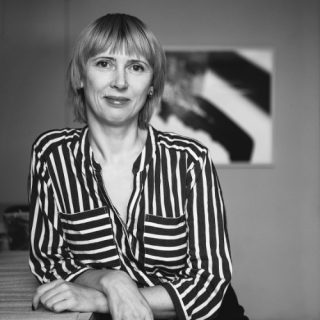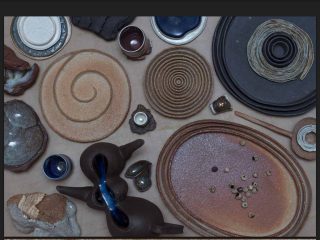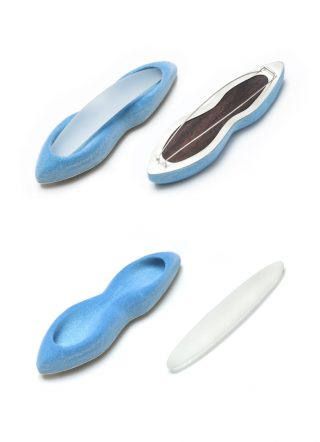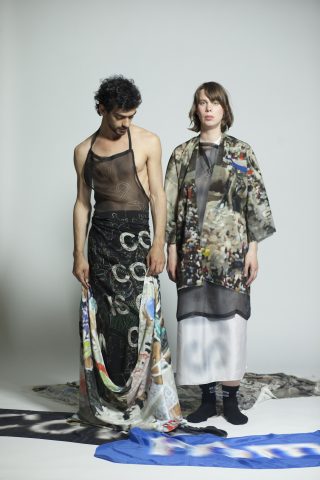4/10/2024
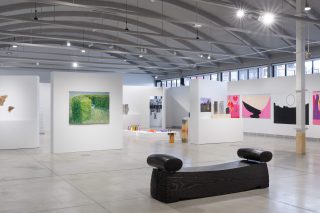 This Saturday, on 5 October the main exhibition of the 9th Tallinn Applied Art Triennial The Fine Lines of Constructiveness opens at Kai Art Center. This year, the Triennial focuses on artists from the Baltic and the Nordic countries, exhibiting works around the idea of constructiveness in art and exploring how this could also be helpful in other areas of life.
This Saturday, on 5 October the main exhibition of the 9th Tallinn Applied Art Triennial The Fine Lines of Constructiveness opens at Kai Art Center. This year, the Triennial focuses on artists from the Baltic and the Nordic countries, exhibiting works around the idea of constructiveness in art and exploring how this could also be helpful in other areas of life.
The curator of the exhibition, Maret Sarapu selected 28 artists via an open call that attracted 470 submissions.
“I wanted to highlight the possibilities art has to address complicated issues, offer solace, hope and new perspectives,” said Maret Sarapu about the theme of the exhibition. “I wanted to explore how to orient yourself towards solutions, both in art and life in general, to experiment and be open to new things.”
The curator was also intrigued by the grounding effect of manual work. “Applied arts and making by hand is something people often turn to in order to find release. Thinking with hands helps to explore ideas and solutions intuitively, which may not emerge when we take a verbal or abstract thinking approach.”
The artists selected for the exhibition share common traits such as playfulness and a courage to experiment, as well as a fresh and caring perspective on material and its life cycle. Sarapu also sees a lot of concern about sustainability and people’s mental balance.
The opening weekend programme includes a curator’s tour by Maret Sarapu (5 October, 12.00) (in Estonian), a day of artist presentations (5 October, 13.30–17.00) (in English) and a workshop by Latvian artist Linda Vilka (& October, 14.00–16.00) (in English).
The main exhibition of the Triennial is accompanied by a multifaceted satellite programme made up of more than 20 events. The opening weekend includes exhibitions at A-gallery, Hop gallery, the library of the Estonian Academy of Arts and Texstudio hall at Baltika kvartal. As part of the satellite programme, on 5 October, artist Rait Rosin and his group of swervers are performing at 12.00–16.00 in Tallinn’s Põhja-Tallinn district, using unique vehicles for transportation and exploring unexpected locations in the city.
Artists participating at the 9th Tallinn Applied Art Triennial: Karin Roy Andersson (Sweden), Riikka Anttonen (Finland), Ieva Baltrėnaitė-Markevičė (Lithuania), Sofia Björkman (Sweden), Per Brandstedt (Sweden), Vincent Dumay (Sweden), Signe Fensholt (Denmark), Hanne Haukom (Norway), Severija Inčirauskaitė-Kriaunevičienė (Lithuania), Liisa Hietanen (Finland), Kati Kerstna (Estonia), Lauri Kilusk (Estonia), Karel Koplimets (Estonia), Arja Kärkkäinen (Finland), Krista Leesi (Eesti), Alves Ludovico (Soome), Jennie McMillen (Rootsi), Anda Munkevica (Latvia), Kadi Pajupuu (Estonia), Anu Penttinen (Finland), Tiina Puhkan (Eesti), Saara Renvall (Soome), Vilde Rudjord (Norra), Taavi Teevet (Estonia), Margit Terasmees (Estonia), Ketli Tiitsar (Estonia), Linda Vilka (Latvia), and Ellisif Hals, Yuvia Maini and Cassius Lambert (Sweden and Norway), presenting a collaborative work.
Exhibition design: Kärt Maran Technical team: Tõnu Narro, Mihkel Lember and Arvi Anderson Graphic design: Laura Pappa
Exhibition The Fine Lines of Constructiveness is open at the Kai Art Center 5.10.2024–16.02.2025. Kai Art Center is open from Wednesday to Sunday, 12–18.
Guided tours: 5.10 at 12.00 and 26.10 (school break special), 9.11, 23.11, 7.12, 11.01, 25.01, 15.02 at 14.00.
Tallinn Applied Art Triennial is an international applied art event, established in 1997 with the aim of supporting and empowering the development of the field of applied art and contemporary craft. The Triennial is supported by the Cultural Endowment of Estonia, Tallinn Culture and Sports Department, DHL Express Estonia AS, OnTheGoSystems, Puumerkki, Raitwood and MULL°.

